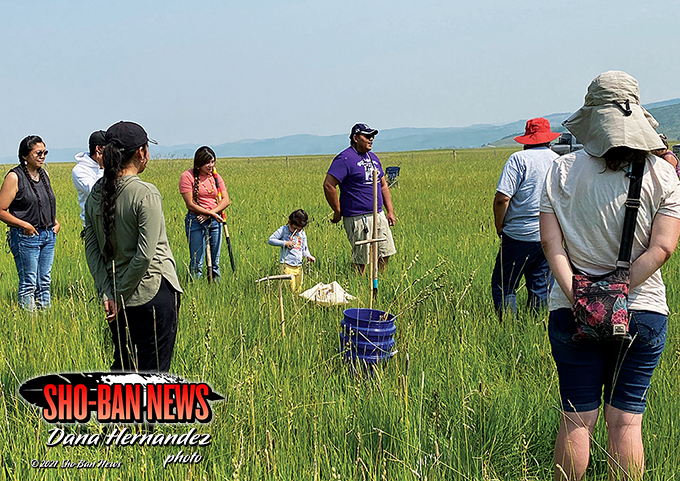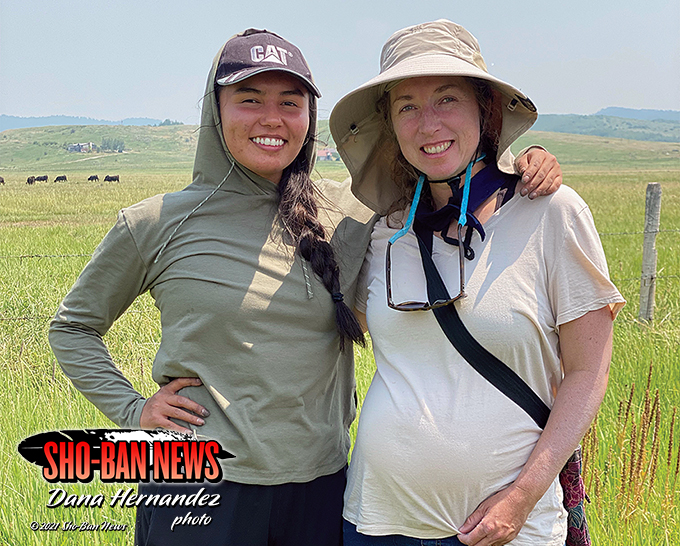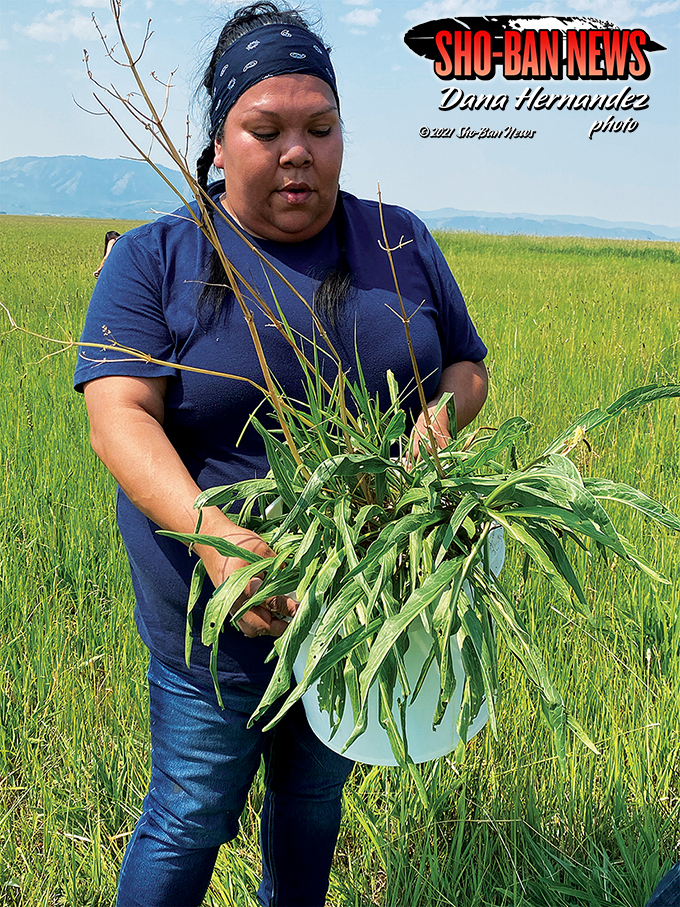Camas & sweet tobacco root harvested at Grays Lake for transplant

Harvesting trip participants gathering on July 12 at Grays Lake.
By DANA HERNANDEZ
Sho-Ban News
WAYAN — The Shoshone-Bannock Language and Culture Preservation Department hosted a camas and sweet tobacco root harvesting trip on Monday, July 12 at Grays Lake National Wildlife Refuge in Wayan.
The harvesting trip is part of LCPD’s Tribal Practices for Wellness in Indian Country grant from the CDC. The purpose of the harvesting trip is for tribal members to gather traditional foods and for the LCPD to transplant traditional plants at the Shoshone-Bannock Tribal Museum.
Idaho State University undergrad student, Sidney Fellows was also present to help collect camas and sweet tobacco for tribal youth students who will be using them to transplant in their cultural and STEM activity programs. Fellows is currently conducting camas research as part of her biological sciences degree. She was assisted by her ISU advisor and supervisor Georgia Hart-Fredeluces who is helping Fellows understand how the plant interacts with human exposure. Her research is meant to gain a better understanding of how camas thrives within different environments. So far, Fellows has learned that camas is a very forgiving plant and that water is its main source for survival. Camas can be transplanted easily during its dormant period, which is during the colder months in Idaho.

Sidney Fellows and Georgia Hart-Fredeluces.
Nolan Brown, LCPD’s Researcher said the plan was to meet Fellows at Grays Lake Wildlife Refuge to harvest a number of plants which will be transplanted to the Tribal Museum. The LCPD also had funds from their grant to be able to invite the entire community out to harvest as well.
Brown said, “I am glad that each of you were able to come out here to join us today.” He added, that last year during their camas gathering trip they found some sweet tobacco root, which is another traditional native that was consumed by our people. Brown said, “our people ate it so much that the surrounding people called us “guyunudeka” because they ate it and was their main staple food.”

Tim Haskett helps a child dig.
Sweet tobacco root is baked the same way that camas is baked. It has a sweet taste when cooked, but when raw and with time it will develop a pungent smell. Early journals written by explorers described the smell as stinky feet. Brown suggested that may be why a lot of people don’t know about the sweet tobacco root and encouraged all participants to gather the root and to try it, otherwise, the knowledge and practice will be lost as “guyunudeka” the people who ate it.
Hovia Edwards who is the Grant Events Coordinator for LCPD said they are just trying to gather some traditional foods that were important to our people so that it can be brought home to plant at the Tribal Museum where others can witness what our traditional plants looked like.

Allison Currie's harvest.
Overall, about 20 participants gathered camas and sweet tobacco root to bring home, some gathered the roots and others chose to bring the entire plant, root and all to transplant at home or at the down bottoms area. The gathering event ended with a sack lunch that was provided by the LCPD staff.





